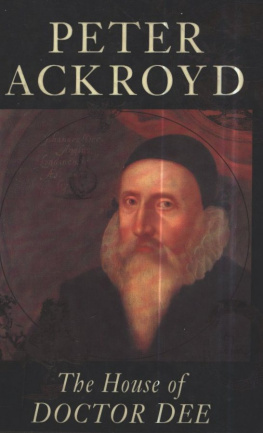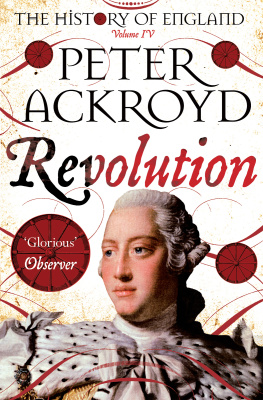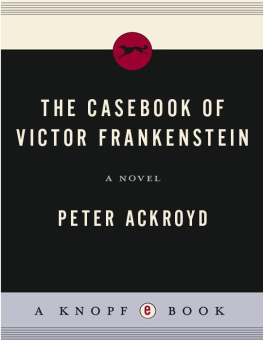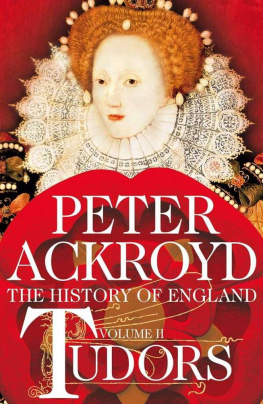Peter Ackroyd - Shakespeare
Here you can read online Peter Ackroyd - Shakespeare full text of the book (entire story) in english for free. Download pdf and epub, get meaning, cover and reviews about this ebook. year: 2005, genre: Non-fiction. Description of the work, (preface) as well as reviews are available. Best literature library LitArk.com created for fans of good reading and offers a wide selection of genres:
Romance novel
Science fiction
Adventure
Detective
Science
History
Home and family
Prose
Art
Politics
Computer
Non-fiction
Religion
Business
Children
Humor
Choose a favorite category and find really read worthwhile books. Enjoy immersion in the world of imagination, feel the emotions of the characters or learn something new for yourself, make an fascinating discovery.
- Book:Shakespeare
- Author:
- Genre:
- Year:2005
- ISBN:978-0-307-49082-7
- Rating:5 / 5
- Favourites:Add to favourites
- Your mark:
- 100
- 1
- 2
- 3
- 4
- 5
Shakespeare: summary, description and annotation
We offer to read an annotation, description, summary or preface (depends on what the author of the book "Shakespeare" wrote himself). If you haven't found the necessary information about the book — write in the comments, we will try to find it.
Shakespeare — read online for free the complete book (whole text) full work
Below is the text of the book, divided by pages. System saving the place of the last page read, allows you to conveniently read the book "Shakespeare" online for free, without having to search again every time where you left off. Put a bookmark, and you can go to the page where you finished reading at any time.
Font size:
Interval:
Bookmark:
Peter Ackroyd
Shakespeare: the biography
Authors Note
Certain questions of nomenclature arise. The earliest publications of Shakespeares plays took the form of quartos or of the Folio. The quartos, as their name implies, were small editions of one play characteristically issued several years after its first production. Some of the more popular plays were reprinted in quarto many times, whereas others were not published at all. About half of Shakespeares plays were printed during his lifetime by this means. The results are good, clumsy or indifferent. There has been a division made between good quartos and bad quartos, although the latter should really be known as problem quartos since textual scholars are uncertain about their status and provenance. The Folio of Shakespeares plays is an altogether different production. It was compiled after Shakespeares death by two of his fellow actors, John Heminges and Henry Condell, as a commemorative edition of Shakespeares work. It was first published in 1623, and for approximately three hundred years remained the definitive version of the Shakespearian canon.
The earliest biographical references to Shakespeare deserve mentioning. There are allusions and references in various published sources, during his lifetime, but there were no serious descriptions or assessments of his plays. Ben Jonson ventured a brief account in Timber: or, Discoveries Made upon Men and Matter (1641) and some biographical notes were composed by John Aubrey without being published in his lifetime. The first extended biography was Nicholas Rowes prefatory Life in Jacob Tonsons edition of the Works of Shakespeare (1709), and this was followed by the various surmises of eighteenth-century antiquarians and scholars such as Samuel Ireland and Edmond Malone. The vogue for Shakespearean biography itself arose in the mid- to late nineteenth century, with the publication of Edward Dowdens Shakespeare: A Critical Study of His Mind and Art (the first edition of which was published in 1875), and has not abated since.
Part I. Stratford-upon-Avon

The title page of this edition of The Bishops Bible shows the enthroned Queen Elizabeth I surrounded by the female personifications of Justice, Mercy (Temperance), Prudence and Fortitude. During his schoolboy years, Shakespeare would have become familiar with the vigorous language of the Bible recently translated into English.
CHAPTER 1.
There Was a Starre Daunst, and Vnder That Was I Borne
William Shakespeare is popularly supposed to have been born on 23 April 1564, or St. Georges Day. The date may in fact have been 21 April or 22 April, but the coincidence of the national festival is at least appropriate.
When he emerged from the womb into the world of time, with the assistance of a midwife, an infant of the sixteenth century was washed and then swaddled by being wrapped tightly in soft cloth. Then he was carried downstairs in order to be presented to the father. After this ritual greeting, he was taken back to the birth-chamber, still warm and dark, where he was laid beside the mother. She was meant to draw to her all the diseases from the child,1 before her infant was put in a cradle. A small portion of butter and honey was usually placed in the babys mouth. It was the custom in Warwickshire to give the suckling child hares brains reduced to jelly.
The date of Shakespeares christening, unlike that of his birth, is exactly known: he was baptised in the Church of the Holy Trinity, in Stratford, on Wednesday 26 April 1564. In the register of that church, the parish clerk has written Guilelmus filius Johannes Shakespere; he slipped in his Latin, and should have written Johannis.
The infant Shakespeare was carried by his father from his birthplace in Henley Street down the High Street and Church Street into the church itself. The mother was never present at the baptism. John Shakespeare and his newborn son would have been accompanied by the godparents, who were otherwise known as god-sips or gossips. On this occasion the godfather was William Smith, a haberdasher and neighbour in Henley Street. The name of the infant was given before he was dipped in the font and the sign of the cross marked upon his forehead. At the font the gossips were exhorted to make sure that William Shakespeare heard sermons and learned the creed as well as the Lords Prayer in the English tongue. After the baptism a piece of white linen cloth was placed on the head of the child, and remained there until the mother had been churched or purified; it was called the chrisom cloth and, if the infant died within a month, was used as a shroud. The ceremony of the reformed Anglican faith, in the time of Elizabeth, still favoured the presentation of apostle-spoons or christening shirts to the infant, given by the gossips, and the consumption of a christening cake in celebration. They were, after all, celebrating the saving of young William Shakespeare for eternity.
Of his earthly life there was much less certainty. In the sixteenth century, the mortality of the newly born was high. Nine per cent died within a week of birth, and a further 11 per cent before they were a month old;2 in the decade of Shakespeares own birth there were in Stratford 62.8 average annual baptisms and 42.8 average annual child burials.3 You had to be tough, or from a relatively prosperous family, to survive the odds. It is likely that Shakespeare had both of these advantages.
Once the dangers of childhood had been surmounted, there was a further difficulty. The average lifespan of an adult male was forty-seven years. Since Shakespeares parents were by this standard long-lived, he may have hoped to emulate their example. But he survived only six years beyond the average span. Something had wearied him. Since in London the average life expectancy was only thirty-five years in the more affluent parishes, and twenty-five years in the poorer areas, it may have been the city that killed him. But this roll-call of death had one necessary consequence. Half of the population were under the age of twenty. It was a youthful culture, with all the vigour and ambition of early life. London itself was perpetually young.
The first test of Shakespeares own vigour came only three months after his birth. In the parish register of 11 July 1564, beside the record of the burial of a weavers young apprentice from the High Street, was written: Hic incipit pestis. Here begins the plague. In a period of six months some 237 residents of Stratford died, more than a tenth of its population; a family of four expired on the same side of Henley Street as the Shakespeares. But the Shakespeares survived. Perhaps the mother and her newborn son escaped to her old family home in the neighbouring hamlet of Wilmcote, and stayed there until the peril had passed. Only those who remained in the town succumbed to the infection.
The parents, if not the child, suffered fear and trembling. They had already lost two daughters, both of whom had died in earliest infancy, and the care devoted to their first-born son must have been close and intense. Such children tend to be confident and resilient in later life. They feel themselves to be in some sense blessed and protected from the hardships of the world. It is perhaps worth remarking that Shakespeare never contracted the plague that often raged through London. But we can also see the lineaments of that fortunate son in the character of the land from which he came.
CHAPTER 2
Shee Is My Essence
Warwickshire was often described as primeval, and contours of ancient time can indeed be glimpsed in the lie of this territory and its now denuded hills. It has also been depicted as the heart or the navel of England, with the clear implication that Shakespeare himself embodies some central national worth. He is central to the centre, the core or source of Englishness itself.
Font size:
Interval:
Bookmark:
Similar books «Shakespeare»
Look at similar books to Shakespeare. We have selected literature similar in name and meaning in the hope of providing readers with more options to find new, interesting, not yet read works.
Discussion, reviews of the book Shakespeare and just readers' own opinions. Leave your comments, write what you think about the work, its meaning or the main characters. Specify what exactly you liked and what you didn't like, and why you think so.











